Introduction
Rheumatoid Arthritis is a chronic (long-term) disease that causes pain, stiffness, swelling and limited motion and function of many joints. While Rheumatoid Arthritis can affect any joint, the small joints in the hands and feet tend to be involved most often. Inflammation sometimes can affect organs as well, for instance, the eyes or lungs.
The stiffness seen in active Rheumatoid Arthritis is most often worst in the morning. It may last one to two hours (or even the whole day). Stiffness for a long time in the morning is a clue that you may have Rheumatoid Arthritis, since few other arthritic diseases behave this way. For instance, osteoarthritis most often does not cause prolonged morning stiffness.
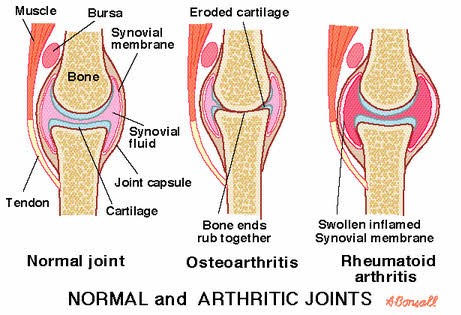 |
|
Source: http://www.thefitindian.com/ |
Causes of rheumatoid arthritis
Rheumatoid Arthritis is an autoimmune disease. This means that certain cells of the immune system do not work properly and start attacking healthy tissues. The cause of Rheumatoid Arthritis is not known. Yet, new research is giving us a better idea of what make the immune system attack the body and create inflammation. In Rheumatoid Arthritis, the focus of the inflammation is in the synovium, the tissue that lines the joint. Immune cells release inflammation-causing chemicals. These chemicals can damage cartilage (the tissue that cushions between joints) and bone.
Symptoms of Rheumatoid Arthritis
Most of the time, RA usually affects joints on both sides of the body equally. Wrists, fingers, knees, feet, and ankles are the most commonly affected. The disease often begins slowly. Early symptoms may include minor joint pain, stiffness, and fatigue.
Joint symptoms may include:
- Morning stiffness, which lasts more than 1 hour, is common. Joints may feel warm, tender, and stiff when not used for an hour.
- Joint pain is often felt on the same joint on both sides of the body.
- Over time, joints may lose their range of motion and may become deformed.
The importance of exercises for Rheumatoid Arthritis
For people with Rheumatoid Arthritis, exercise is a main part of Rheumatoid Arthritis treatment. A structured exercise program can be greatly beneficial to the overall well-being and functioning of the individual with rheumatoid arthritis. Such a program should focus on stretching, strengthening and aerobic conditioning while conserving energy. The program should be tailored to fitness level and capabilities, and take into account any joint damage that exists. Rest and energy conservation can be helpful for locally inflamed joints, it can assist with pain management and decrease the inflammation of the involved joint. However, the potential side effects of prolonged inactivity or rest include decreased range of motion, loss of strength, altered joint-loading response, and decreased aerobic capacity.
- Pain Relief
By using heat, analgesia is accomplished, muscle spasm relieved, and elasticity of peri-articular structures obtained. Heat can be used before exercise for maximum benefit. Thermotherapy may be applied as a superficial hot-pack, infrared radiation, paraffin wax, or hydrotherapy. Applications are recommended for 10–20 minutes once or twice a day. Caution is necessary in patients with sensorial deficits and impaired vascular circulation in hands and feet to avoid risk of burn.
Objectives of hydrotherapy treatment are to increase range of joint motion to strengthen muscles, to relieve painful muscle spasms, and to improve the patient’s well-being.
- Stretching Exercises
Acutely, inflamed joints should be rested to prevent exacerbation of symptoms. For non-inflamed joints, active or active-assisted stretching of all major joints is essential to prevent contracture formation and maintain the current range of motion to perform most activities of daily living. Stretching should include the muscles of your arms, your back, your hips, the front and back of your thighs, and calves.
Some basic strengthening and stretching exercises are given below:-
Upper Limb – Stretching and strengthening exercises
Shoulder Joint
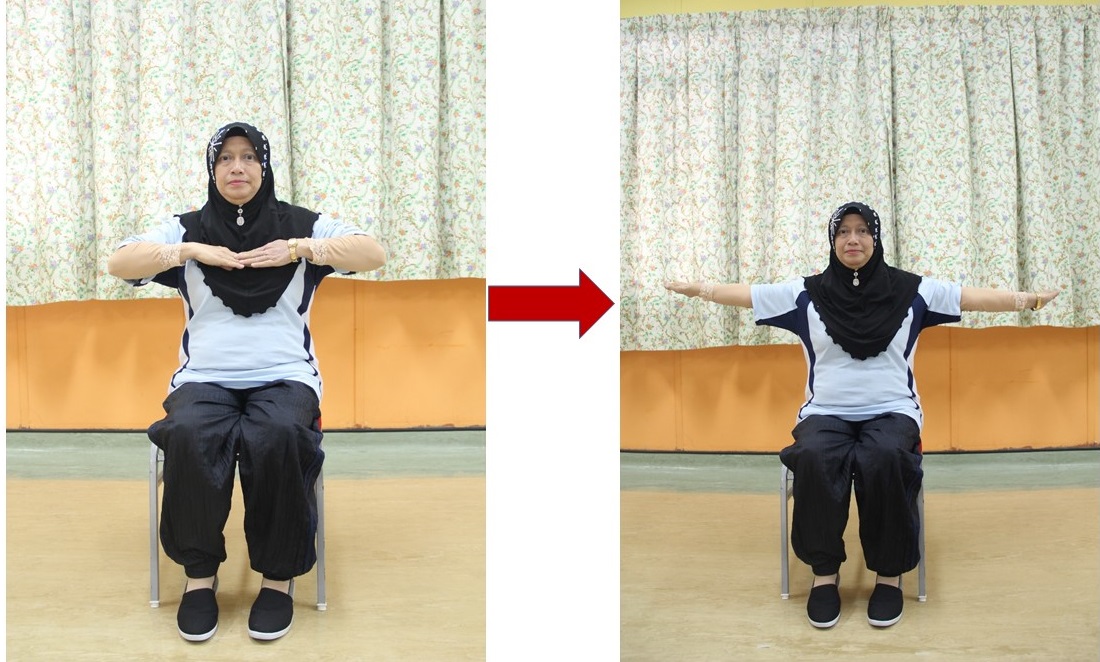 |
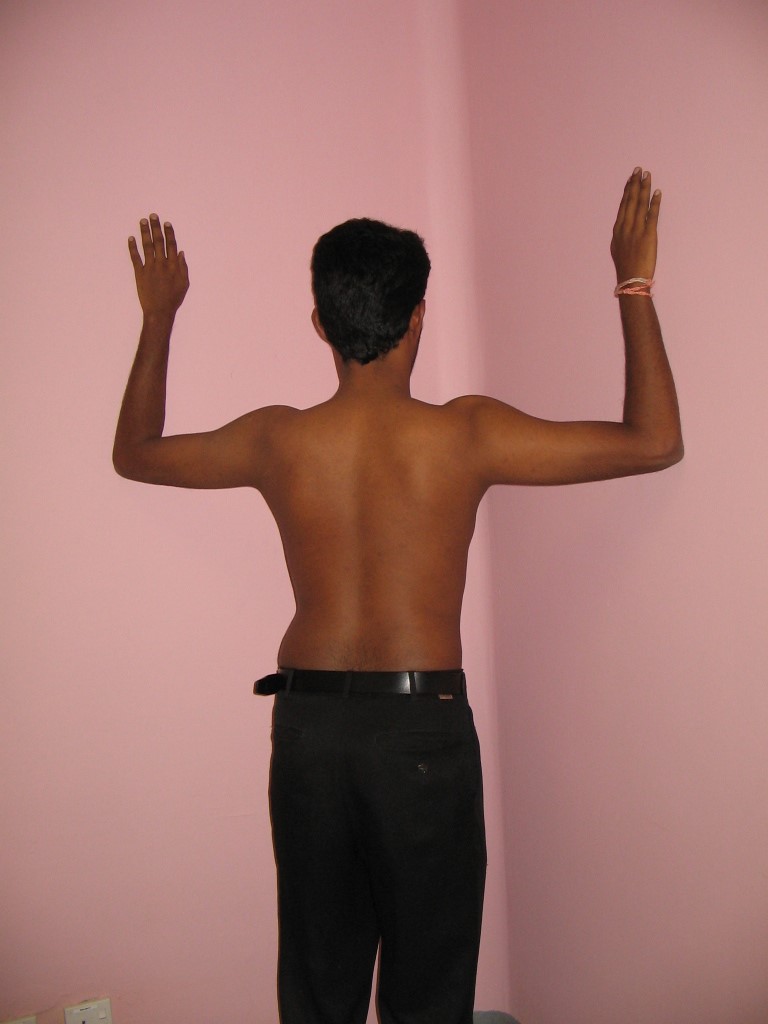 |
|
Sitting and lift both shoulder in front and then straight. Hold 30 seconds, repeat 10 times |
Stand at the corner of the wall. Place each hand at shoulder height on adjacent walls of a corner and lean into the corner. Hold for 20 seconds, repeat 10 times. |
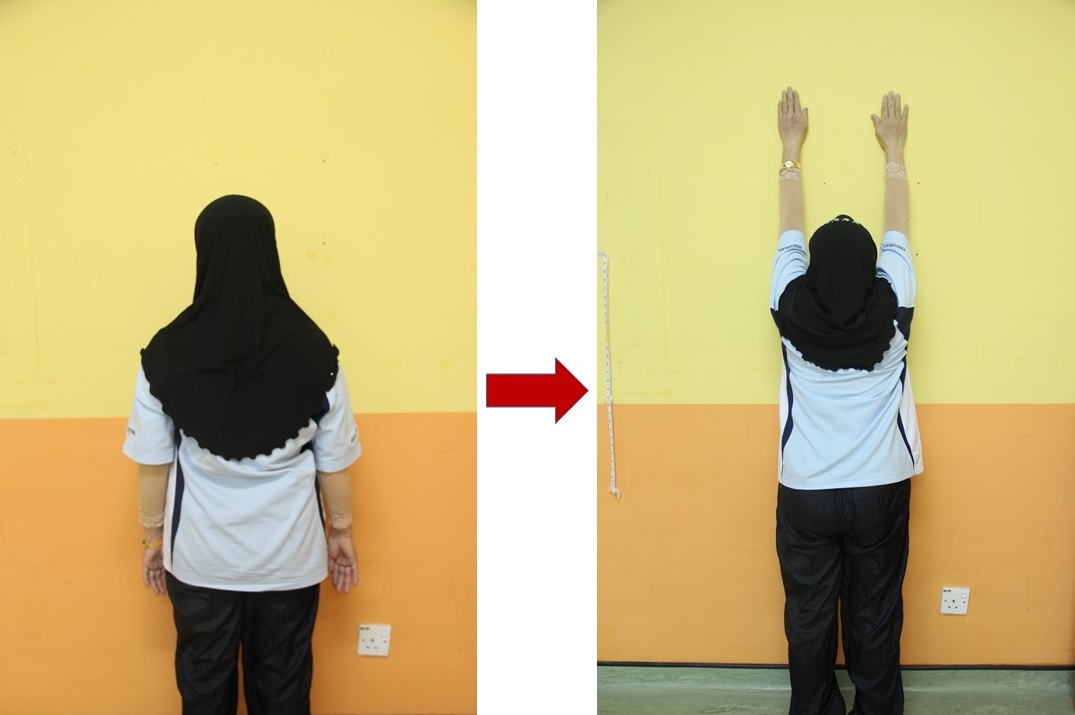 |
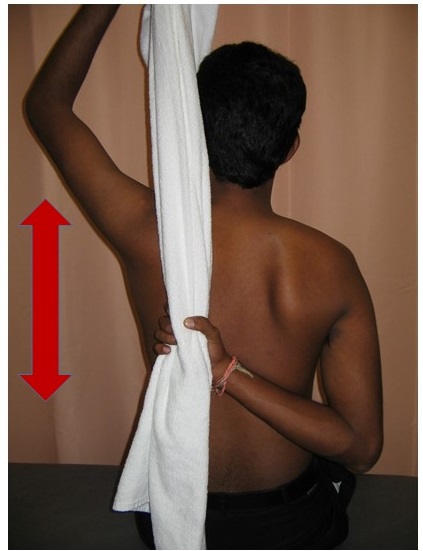 |
|
Stand at the corner of the wall. Place each hand at shoulder height on adjacent walls of a corner and lean into the corner. Hold 20 seconds, repeat 10 times |
Sit or stand. Hold a towel with affected arm behind the back and to use the other arm to pull the affected arm up the back. Hold for 20 seconds. Repeat 5 times. |
Elbow Joint
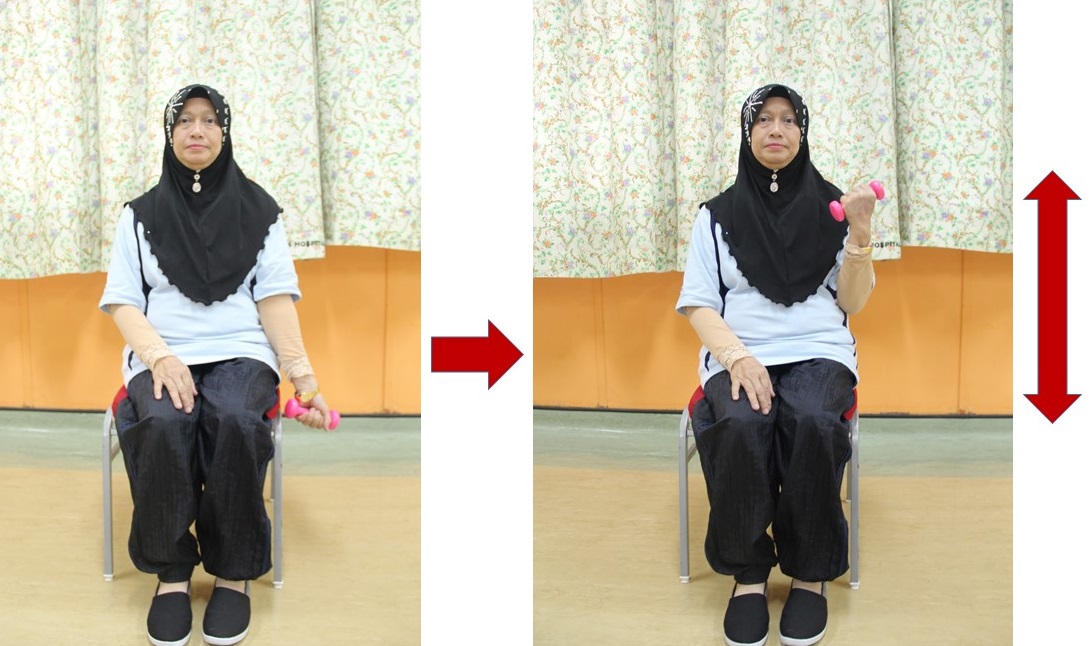 |
Sit in armless chair, with your back supported by back of chair Hold hand weights at sides, arms straight, palms in. Slowly bend one elbow, lifting weight toward chest. (Rotate palm to face shoulder while lifting weight.) Hold position for 5 second and slowly lower arm to starting position. Repeat 10 times each arm. |
Wrist Joint
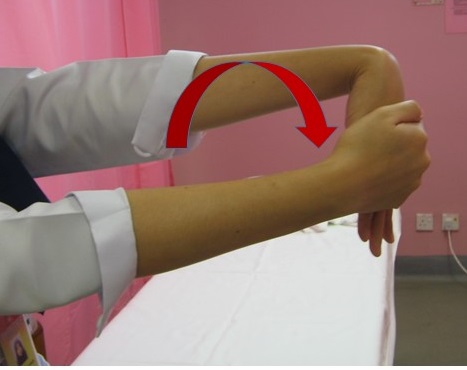 |
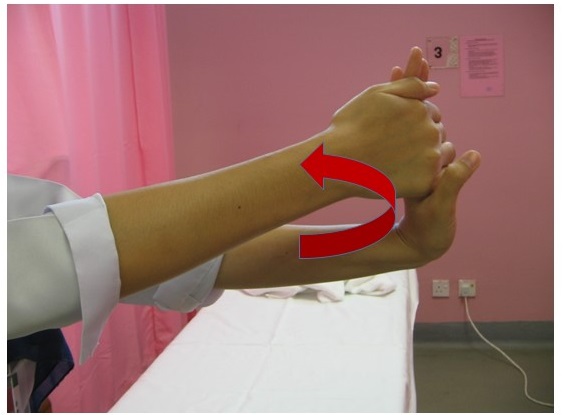 |
|
With palm facing down, grasp the back of the hand and pull the wrist down as far as possible. Hold for a count of 10. Release and repeat 10 times. |
With palm facing up, grasp the front of the hand and pull the wrist up as far as possible. Hold for a count of 10. Release and repeat 10 times. |
Knee Joint
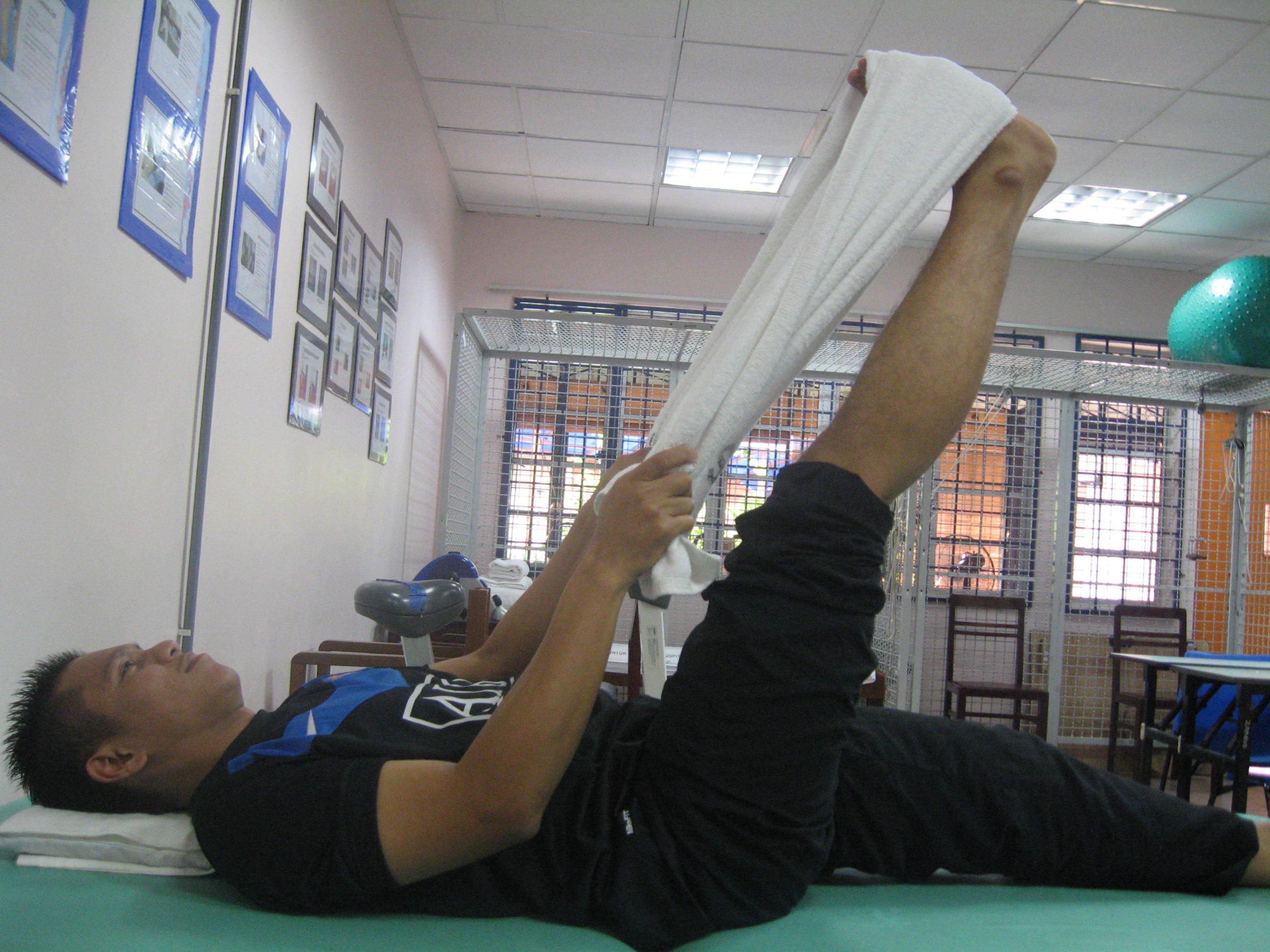 |
Lying flat and put towel around the foot. Hold the towel with your both hands and pull upward without bending the knee and trunk. Hold for 20 second and slowly put the leg down. Repeat 10 times each leg. |
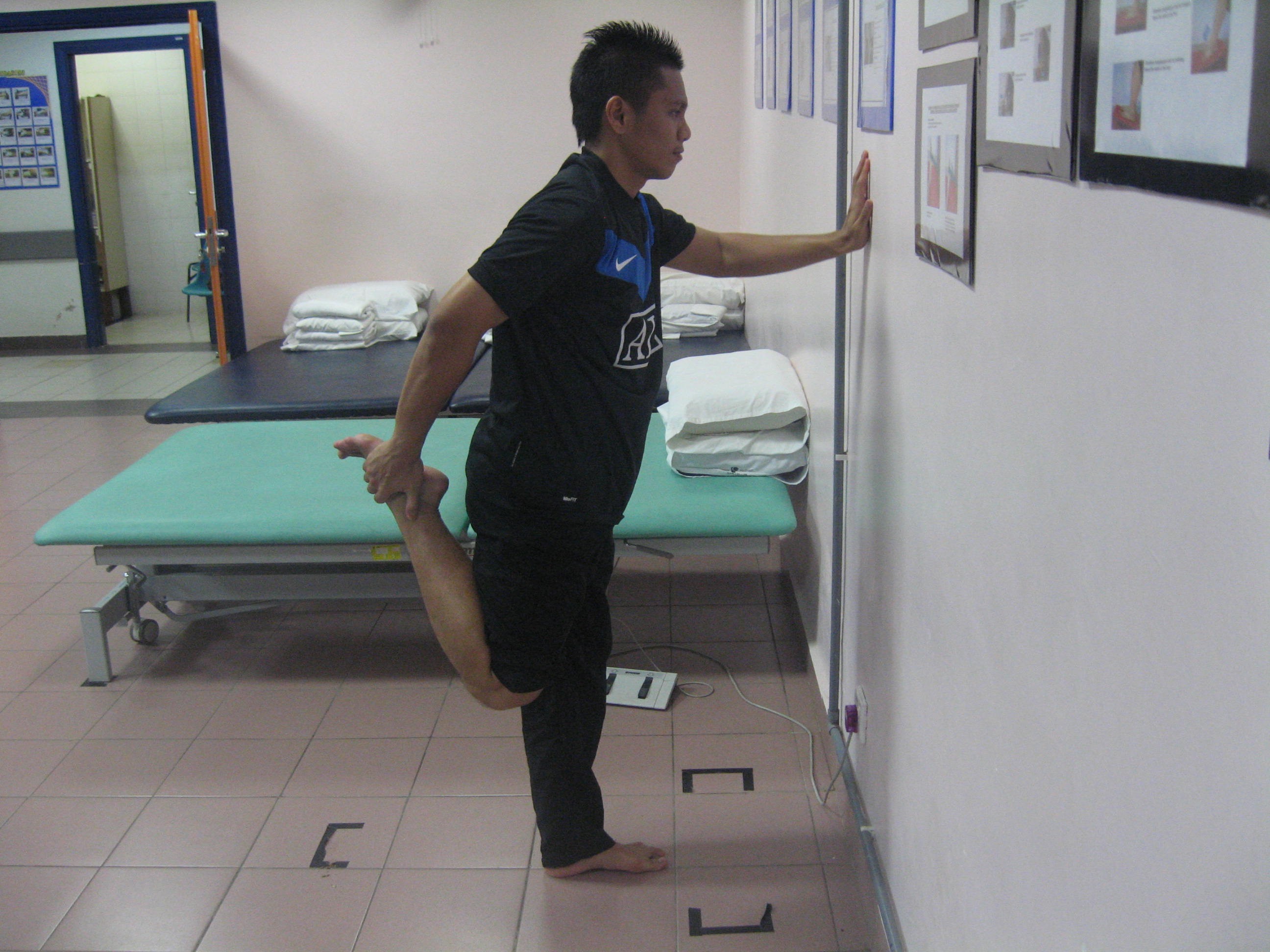 |
Stand with hand hold the wall for balance. Bend the knee and other hand pull the ankle to your body. Make sure your body straight Hold for 20 second and repeat 10 times each leg. |
Ankle Joint – Toe raises/heel raises
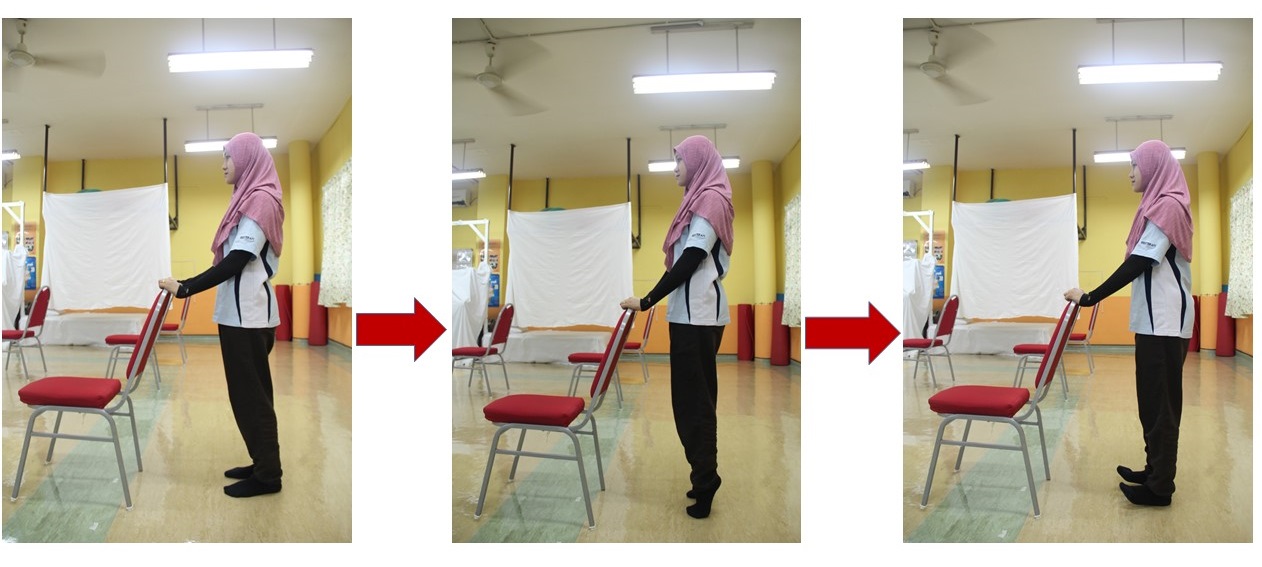 |
|
Stand straight and hold onto the back of a chair, without bending at the waist or knees. Rise up on your toes and then back onto your heels. When you rise up onto your toes, imagine you are moving your head up to the ceiling. Repeat 10 times. Hold on to the chair as little as possible to challenge your balance. Do this twice each day. |
Aerobic exercises
Walking, cycling, swimming, and light weight training done three times a week for 30 minutes is good for patient with Rheumatoid Arthritis, but check with your doctor or physiotherapist to make sure they are safe for you. You must avoid lifting heavy weights and begin with short periods of exercise until you know how a workout will make you feel. If you have pain for more than an hour after your exercises, you have overdone it.
Other tips: Don’t exercise when joints are inflamed; take a break if you feel pain; and alternate positions periodically when performing tasks such as gardening or cooking.
Patient Education for patient Rheumatoid Arthritis
- People with Rheumatoid Arthritis tend to feel stiffer in the morning than at other times of the day, so take a shower to warm up your joints, and then stretch to help loosen you up for the rest of the day.
- Heat helps to relax muscles, while cold helps to dull the sensation of pain. You might find that applying hot packs or ice packs or alternating between hot and cold helps reduce your pain. Relaxing in a hot bath can also bring pain relief, as well as exercising in a warm pool.
- If walking is painful, walking aid such as a cane may be used. A cane is easy to find for use and can take up to 20% of your body weight off your legs, hips, and ankles. A cane used on the opposite side of a painful knee or hip makes walking easier.
- Being overweight can place excessive stress. It can adversely affect your weight-bearing joints like the knees, back, and hips.
References
- Mannheimer C, Carlsson CA. The analgesic effect of transcutaneous electrical nerve stimulation (TENS) in patients with rheumatoid arthritis. A comparative study of different pulse patterns. Pain. 1979;6:329-334.
- Nicholas JJ. Physical modalities in rheumatological rehabilitation. Arch Phys Med Rehabil. 1994;75:994-1001.
- Van den Ende CHM, Vliet Vlieland TPM, Munneke M, Hazes JMW. Dynamic exercise therapy in rheumatoid arthritis: a systematic review. Br J Rheumatol. 1998;37:677-687.
- Becker BE. The biologic aspects of hydrotherapy. J Back Musculoskel Rehabil. 1994;4:255-264.
- http://www.everydayhealth.com/hs/rheumatoid-arthritis-treatment-management/assistive-devices/. Retrieved 3 November 2015.
Source image
- http://www.thefitindian.com/. Retrieved 3 November 2015
- Jabatan Fisioterapi, Hospital Kuala Lumpur
- Unit Fisioterapi Hospital Melaka
- Perkhidmatan Fisioterapi, Bahagian Sains Kesihatan Bersekutu.
| Last Reviewed | : | 23 August 2019 |
| Writer / Translator | : | Ismawi bin Ismail |
| Accreditor | : | Daaljit Singh a/l Harbachan Singh |
| Reviewer | : | Halimah bt. Hashim |







